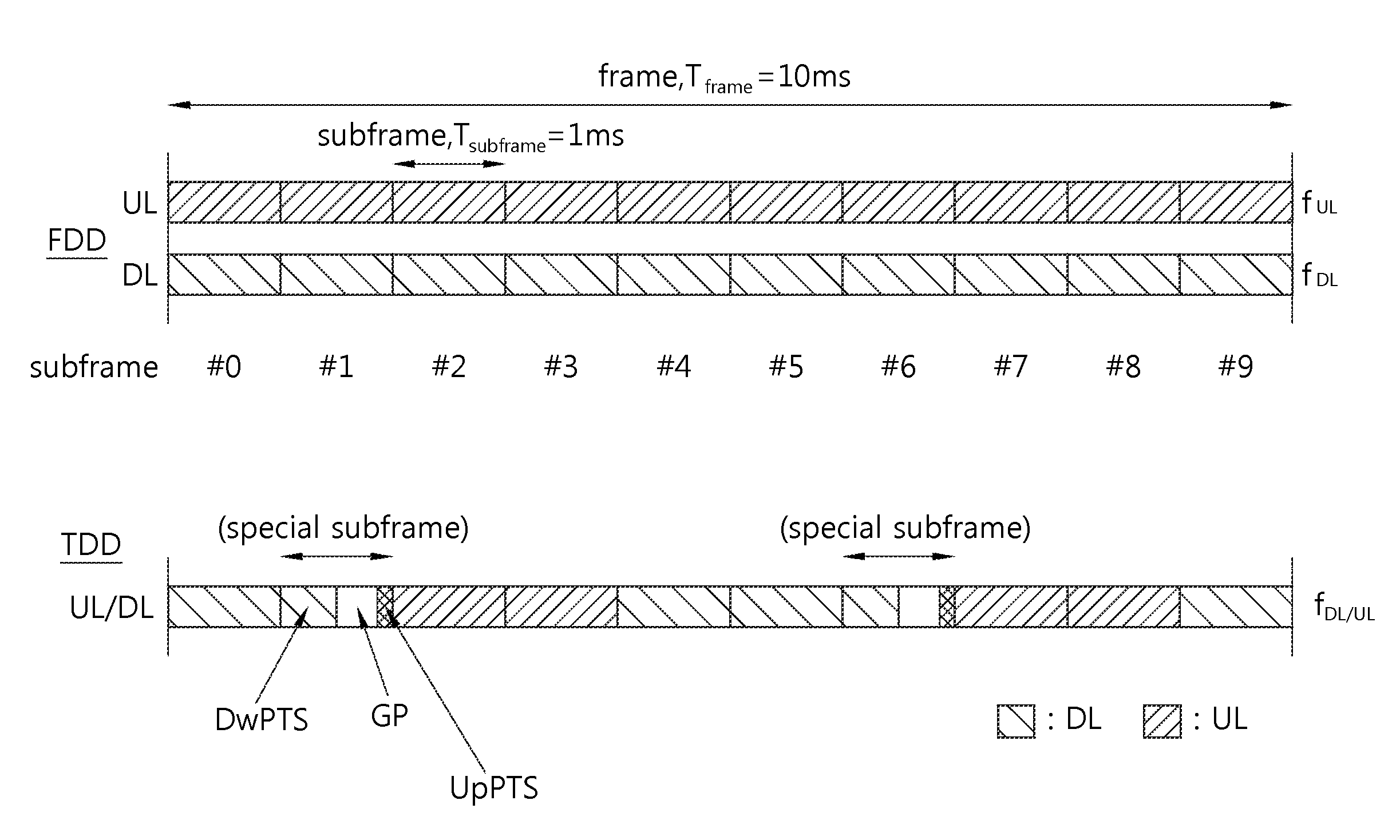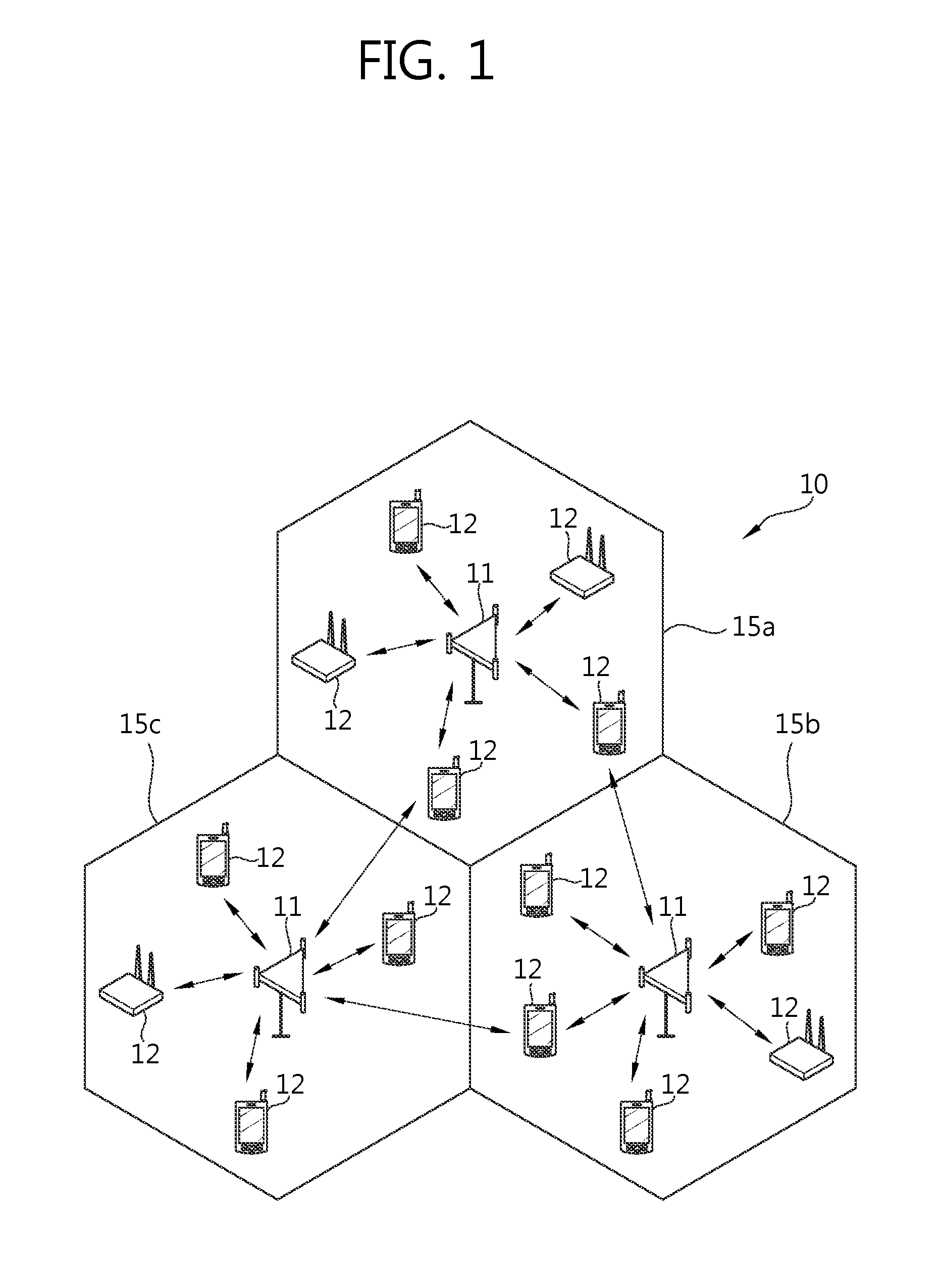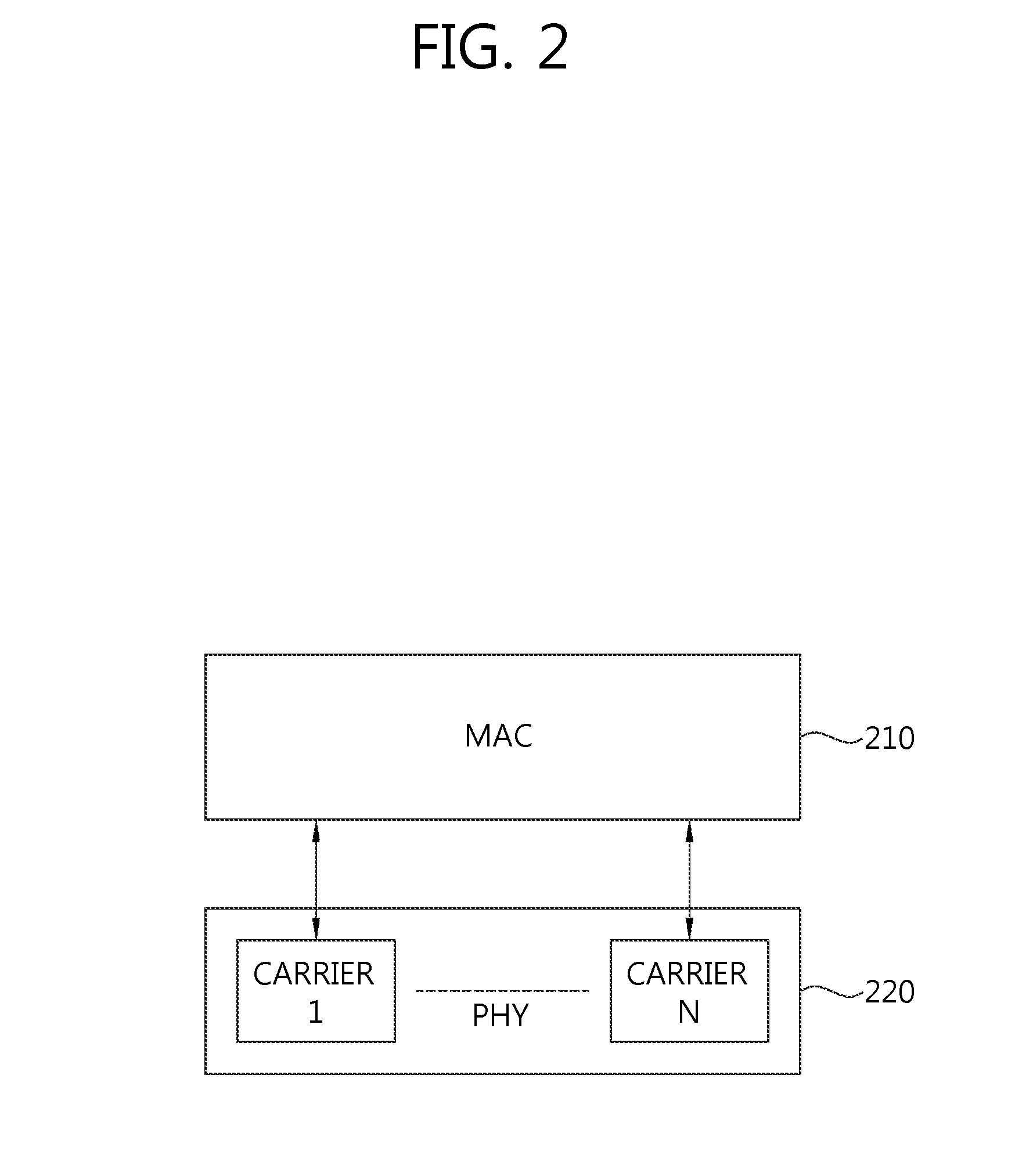Method and apparatus of uplink scheduling and HARQ timing
a technology of harq timing and uplink scheduling, applied in the field of wireless communication, can solve the problems of plurality of uplink resources of scheduled cells, inability to successfully decode data signals, and scarce remaining frequency resources, and achieve the effect of data transmission rate and efficient operation
- Summary
- Abstract
- Description
- Claims
- Application Information
AI Technical Summary
Benefits of technology
Problems solved by technology
Method used
Image
Examples
first exemplary embodiment
[0113]The first exemplary embodiment is a method which combines a UL scheduling / HARQ timing based on the TDD UL / DL configuration #0 and self scheduling / HARQ timing.
[0114]According to the first exemplary embodiment, with regard to cross-carrier scheduling, the UL scheduling / HARQ timing is applied for the FDD scheduled cell based on the UL reference UL / DL configuration #0 on TDD scheduling cell, and the UL scheduling / HARQ timing by self scheduling is applied to the remaining subframes which the UL scheduling / HARQ timing for the FDD scheduling cell through cross-carrier scheduling is not applicable. For example, if based on the UL reference UL / DL configuration #0, the TDD scheduling cell may transmit the UL grant / PHICH for the FDD scheduled cell only in subframe #0, 1, 5, and 6, and in this case, according to Table 8, the corresponding PUSCHs can only be transmitted in the subframe #2, 3, 4, 7, 8, 9 in the FDD scheduled cell. That is, in this case, the FDD scheduled cell may perform th...
second exemplary embodiment
[0119]The second example embodiment is a method which combines the UL scheduling / HARQ timing based on the TDD UL / DL configuration and the self-scheduling / HARQ timing.
[0120]According to the second exemplary embodiment, in the cross-carrier scheduling, based on the TDD UL / DL configuration based on the TDD scheduling cell (or the TDD UL / DL configuration in the TDD scheduling cell is set to the UL-reference UL / DL configuration based on above UL-reference UL / DL configuration), it applies the UL scheduling / HARQ timing for the FDD scheduled cell, and, it applies the UL scheduling / HARQ timing by self-scheduling for the remaining subframes that is not associated with the UL scheduling / HARQ timing for FDD scheduled cell through the cross carrier scheduling.
[0121]FIG. 9 is a diagram illustrating an example of a UL scheduling / HARQ timing as a second exemplary embodiment of the present invention. FIG. 9 illustrates the case where the PCell, for example, is a scheduling cell configured to the TDD...
third exemplary embodiment
[0125]The third exemplary embodiment is a method hat applies the same timing of the existing FDD UL HARQ scheduling in the cross-carrier scheduling (i.e., after the UL Grant / PHICH is transmitted in subframe #n from the base station, a UE transmits the PUSCH in subframe n+4, and UL grant / PHICH receives the PHICH that was transmitted in the #i+4, but the method is applying the UL scheduling / HARQ timing by switching to the self-scheduling only in the special subframe. Here, the special subframes mean that, when the existing FDD UL scheduling / HARQ timing is applied, those subframe which are unable to transmit the G / H in the scheduling cell. In the third exemplary embodiment, it supports the UL scheduling / HARQ timing by switching from these other subframe to the self scheduling. If following the third illustrating example, the current LTE standard is less affected, while the UL scheduling / HARQ operation may be smoothly performed in a UE with the TDD-FDD CA (or dual connection) configurat...
PUM
 Login to View More
Login to View More Abstract
Description
Claims
Application Information
 Login to View More
Login to View More - R&D
- Intellectual Property
- Life Sciences
- Materials
- Tech Scout
- Unparalleled Data Quality
- Higher Quality Content
- 60% Fewer Hallucinations
Browse by: Latest US Patents, China's latest patents, Technical Efficacy Thesaurus, Application Domain, Technology Topic, Popular Technical Reports.
© 2025 PatSnap. All rights reserved.Legal|Privacy policy|Modern Slavery Act Transparency Statement|Sitemap|About US| Contact US: help@patsnap.com



